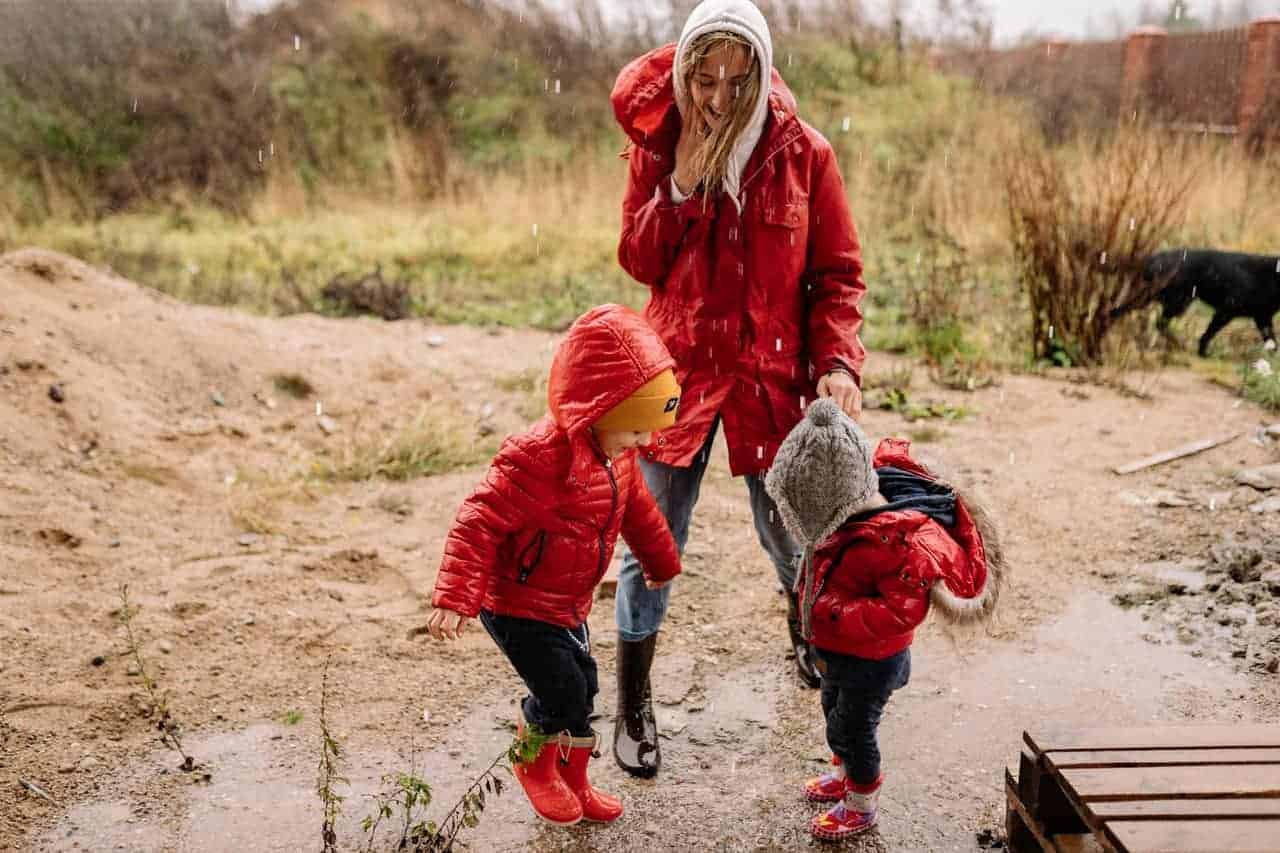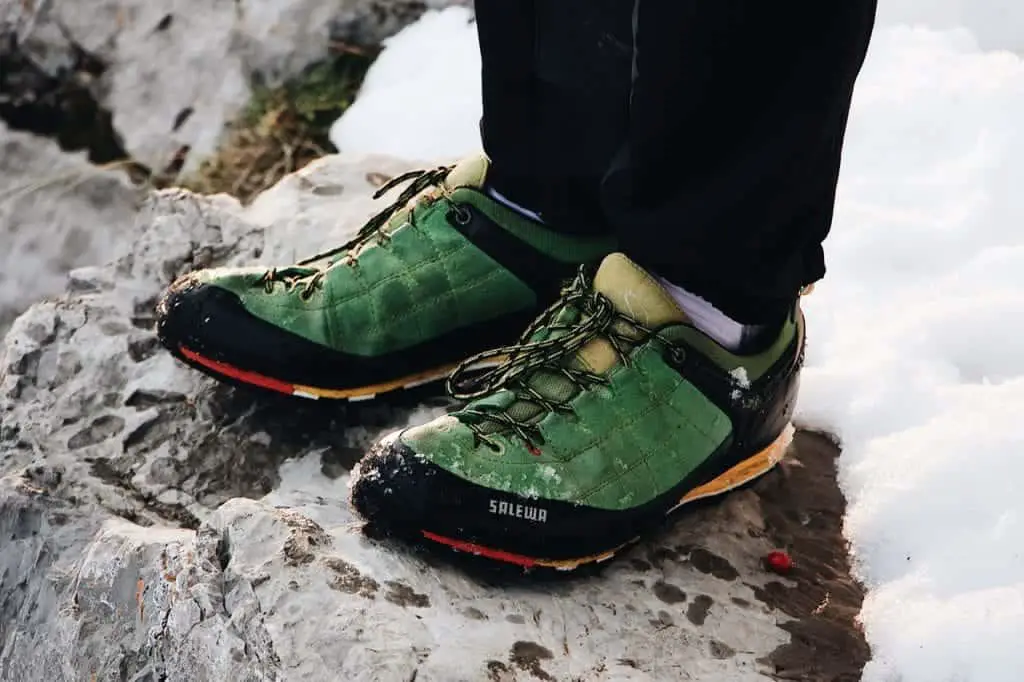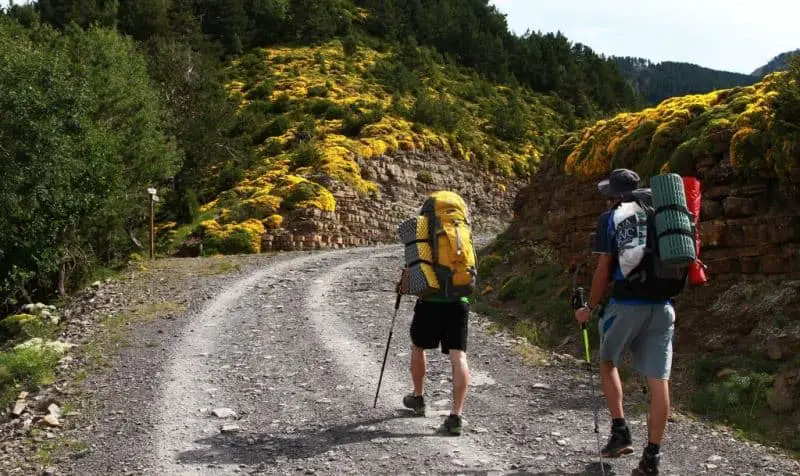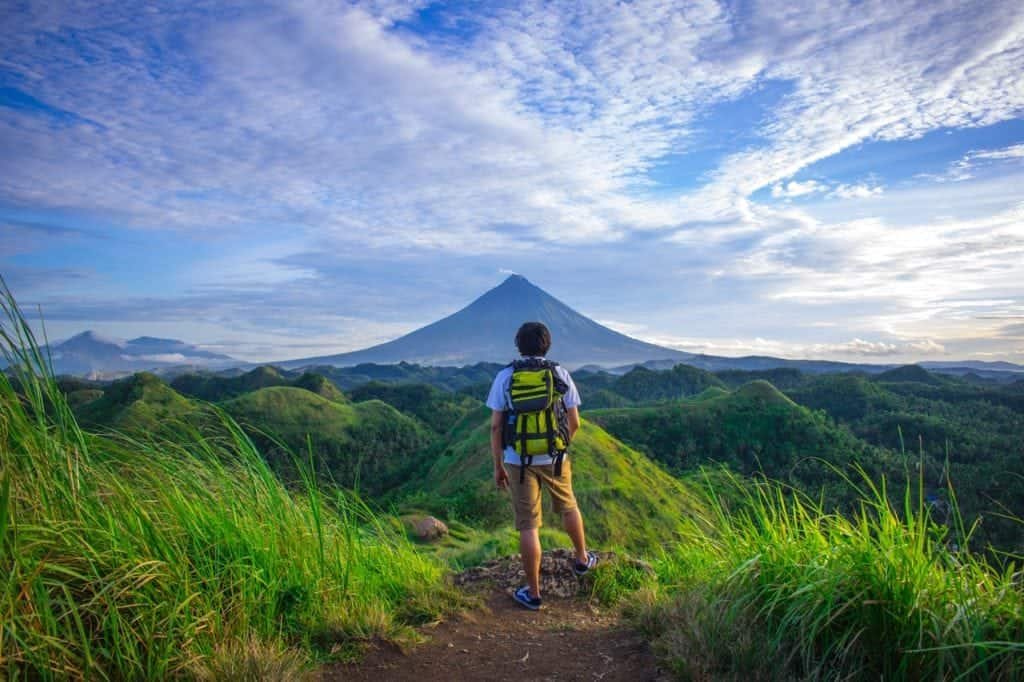When the rainy seasons come, most hikers choose to lay back and lock themselves indoors until the conditions are favorable again. However, nothing can hold back the passion of a real outdoor enthusiast. Not even the extreme cold, strong winds, or the nastiest storm. Hiking in the rain comes with a tone of challenges particularly if you lack the best rain gear for hiking. Nonetheless, with the right attitude and the right outwear, it can turn out to be much cooler than adventuring on a regular day. This buying guide investigates watertight outwear, its importance, and how to choose the most consummate gear.

Advantages of Using the Best Raingear For Hiking
Nothing ruins an awesome backpacking experience like a storm. It will not only leave you drenched but also incredibly cold and utterly uncomfortable. However, quality rain gear can help to ease your pain and guarantee an uninterrupted backpacking encounter. First, you need rainproof accessories for visibility. A wide range of rain gear especially raincoats and pants come in bright colors or incorporate reflective striping. These features are meant to heighten visibility in low-light conditions. Reflective striping and bright colors can mitigate accidents.
Secondly, they prevent heat loss that could amount to hypothermia by providing insulation. A good storm will come alongside intense wind. Rainproof equipment will keep you safe from that. High-quality material and rugged design on rain outwear are also advantageous. Regular fabrics cannot withstand grim outdoor conditions characterized by wind and high precipitation. Moisture cuts down on the overall strength of everyday fabrics minimizing durability.
On the flip side, outdoor raingear features tough and long-lasting materials with a DWR coating that keeps out any moisture. They dry quickly to keep them functional at all times as well. To top it off, typical rain gear will hold out any water and keep your body and backpack essentials dry.
Basic Hiking Rain Gear and Their Importance
i. Waterproof socks
Moisture is your greatest threat when hiking in wet conditions. When moisture penetrates your footwear then insulation will be compromised. You need a pair of socks that will keep out all moisture and keep your feet dry even when you wade through puddles. This is what waterproof socks are crafted to provide.
ii. Waterproof mittens and gloves
Mittens and gloves are synonymous with wet and cold conditions. They are designed to keep your fingers warm and dry. You need to be specific when choosing gloves for hiking in rainy conditions since they need to be waterproof. Similarly, they should be insulated to prevent heat loss. For amplified performance, always opt for gloves that fit perfectly.
iii. Rain jacket
The rain jacket is a vital accessory for any excursion on a rainy day. Rain jackets are meant to shield you from precipitation and wind. In the same way, a good model must be fully waterproof, light, and breathable as it will form part of your outer shell. Jackets with DWR coating offer incredible waterproofing features. For superior functionality, it is advisable to have two rain jackets more so under heavy rains.
iv. Rain pants
A wide range of rain pants incorporates nylon material that is not only waterproof but also super breathable. This contributes to added protection and comfort for your legs. Other than that, the ultimate pair ought to be stretchy for easy mobility and wind-resistant too. You should also look out for extra features like drawcords and full-length zippers which yield a customized fit, better insulation, and ventilation.
v. Breathable base layer
The base layer is all about insulation given the amount of coldness you are bound to encounter. Still, it wicks away any sweat from your skin to keep it dry. Ideal materials for the base layer should be quick-drying and well-ventilated for improved thermoregulation. Cotton is not suitable in this scenario. Synthetic fabrics like polyester, nylon, and wool fit the bill for a great base layer.
vi. High-top hiking boots or trail shoes
The last thing any hiker would wish for is walking on cold and uncomfortable feet. Consequently, investing in a premium pair of trail shoes would be worth it. Waterproof high-top boots will keep your feet dry aside from offering traction on slippery terrain.
vii. Gaiters
Strapping a waterproof pair of gaiters over your pants or leggings will provide maximum protection under wet conditions. Your pants will not absorb any water as you move along. It will also cut off any mud, dirt, and water that might get into your hiking shoes from the top. This will keep your feet and socks cozy.
viii. Backpack rain cover
It would be unwise to step into a downpour without a proper rain cover to secure the contents of your backpack. You need to have a great rain cover especially if your backpack is not waterproof. It will also come in handy if the zippers on your backpack are not taped. Fortunately, most of them are ultra-light besides packing away small hence right for adventure. On top of that, it is advisable to choose bright-colored rain covers to improve visibility.
ix. Waterproof backpack
Prudent outdoor enthusiasts know the importance of a quality waterproof backpack. It will keep your essentials safe if you forget to pack up your rain cover.
x. Trekking poles
Trekking poles are important if you plan to maneuver through wet, slippery trails without much effort. Even with aggressive treads on your boots, it is nearly impossible to find steady footing on a rainy day. To avoid losing balance, sliding down a muddy hillside, or catching an avoidable injury, it might be imperative to bring along your trekking poles.
xi. Rain hat
You might want to grab a rain hat if your jacket does not have a hood. Even if it has one, a rain hat provides an extra layer of protection. Of course, it should be waterproof as it covers your head, keeps it warm, and locks out any moisture.
How do you choose them?

To choose the most appropriate waterproof gear for your adventure you need to ask yourself the following questions:
a. How much are you willing to spend?
Your budget will dictate the kind of rain gear you take home in terms of quality and level of sophistication. Luckily, you have a wide range of choices depending on what you can pay. Even so, you should always keep your eyes on the price-to-quality ratio. More importantly, check out for the most basic or important attributes like waterproofing in case you are on a tight budget.
b. How long do you plan to hike?
It is relatively easy to predict the kind of weather to expect in the backcountry if you plan to hike or backpack for a single day. On the contrary, you will have a hard time predicting potential weather conditions for a multiday hike. Basically, the longer you plan to spend outdoors the higher your chances of encountering a storm or extreme weather. Therefore, if you are planning for a long hike, ensure to add high-performance raingear to your essentials list. Comparably, bring along some rain cover on your day hike just in case anything goes south.
c. What do other customers or hikers have to say?
This is the closest way to ascertaining if a potential outwear is durable or as functional as the manufacturer claims it to be. You can read through reviews if it is an online purchase or else you can ask a trusted friend or even fellow outdoor enthusiasts.
d. What are the prevailing weather conditions?
Weather is a top factor to keep in mind before hitting the road. You should be well-equipped at all times. Remember, there is a slight potential of a drizzle or heavy downpour even during summer. Winter and spring seasons feature the heaviest precipitation.
Things to consider while choosing these products for backpacking
There are several prime factors to give thought to when choosing rainproof gear for your upcoming backpacking trip. Let us break them down:
Level of waterproofing
Every outdoor gear possesses different waterproof ratings. Outwear with a high waterproof rating are better at keeping out water. The rating ranges from 1000 mm to 30,000 mm. High waterproof ratings are appropriate for severe weather while lower ratings are ideal for drizzles.
Breathability
Just like any other outdoor gear, rain outwears need to be well-ventilated. Breathability allows sufficient air circulation to keep your skin cool. In the absence of that, your body will be subjected to profuse sweating. Backpacking accessories with pit zips are known to promote air circulation. In addition to that, choose fabrics that will keep out moisture while retaining breathability.
DWR finish
Jackets and pants that feature a durable water-repellent finish stand out for their ability to block out any moisture that might be soaked up in the material. A smart adventurer will run for models with this attribute as they guarantee solid protection in a relentless downpour. Yet, the DWR eventually wears off after some time reducing functionality. That is why you might have to retreat your outwear with a fresh durable water repellent coating to regain initial functionality.
Extra features
Extra features contribute to the overall comfort and functionality of your backpacking accessories. They come in form of roomy handwarmer pockets, hoods, and taped zippers.
Quality of construction
The durability of all outdoor gear is anchored on the quality of materials and the level of construction. A well-put-together piece will last longer and yield value for your money. Choose rainproof gear that is expertly stitched together, the kind of gear that will not fall apart anytime soon even when subjected to unforgiving conditions. One key pointer of longevity is an abrasion-resistant exterior.
Pack Size and weight
Any gear for hiking, camping, or backpacking should be light to give you an easy time as you move through the jungle. Always go for outwear that is extra-light yet functional and durable. Additionally, whether it is a trouser or a jacket, it should pack away small and give room for other accessories.
Comfort
It is indispensable for your raingear to be enjoyable to walk in. One of the aspects that affect the level of comfort is flexibility. The best watertight gear should stretch sufficiently and move with your body allowing for smooth mobility without being cumbersome. In a like manner, it should also be functional to keep you dry, warm, and protected. Extra features like pockets, hood, and zippers will have a major impact on the coziness of your rain gear.
Conclusion
Now that you are an expert in rainproof gear, choosing should not be a pain in the neck. Hiking in spring and winter should not be a nightmare anymore. There are so many accessories that you can add to your outdoor gear to keep your body dry, boost your balance, and enhance your experience. Take time to examine quality as it will have a direct influence on the functionality of your rain gear.




